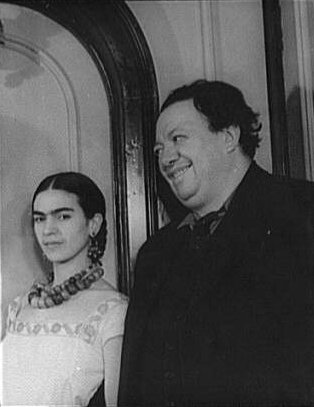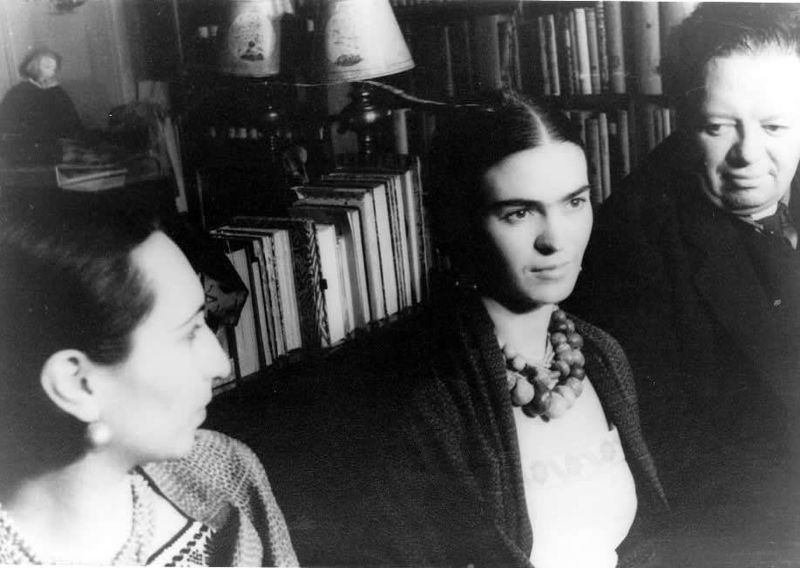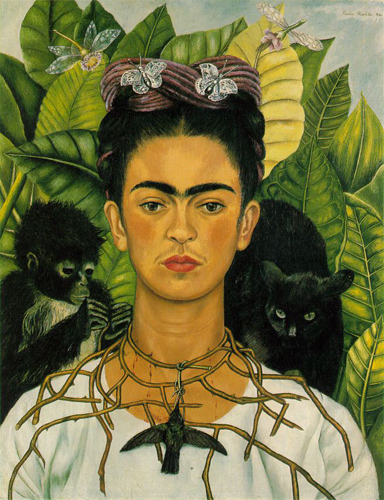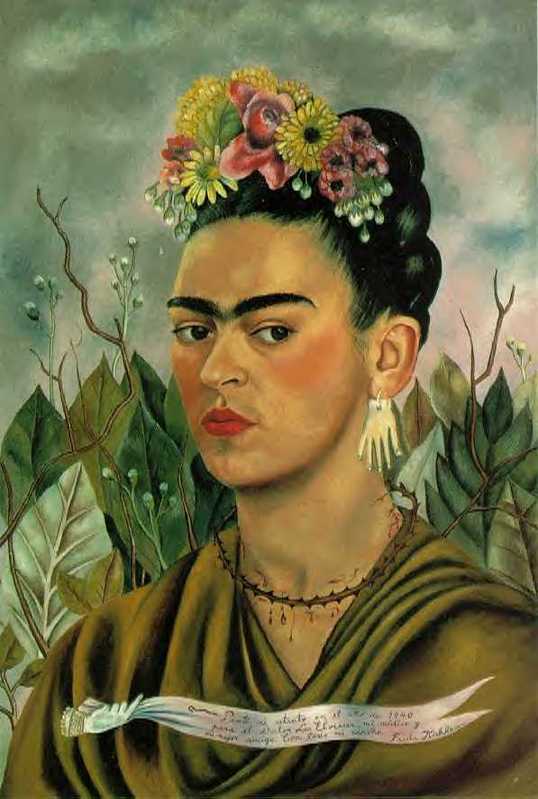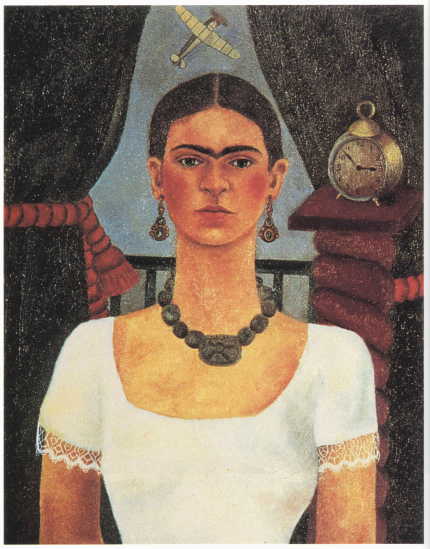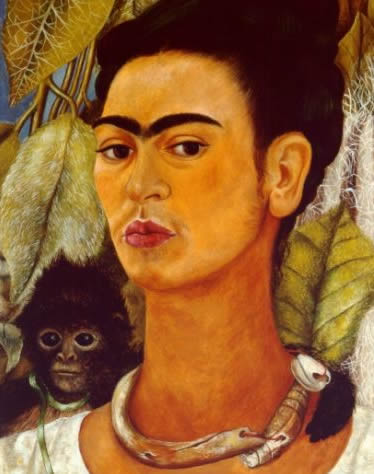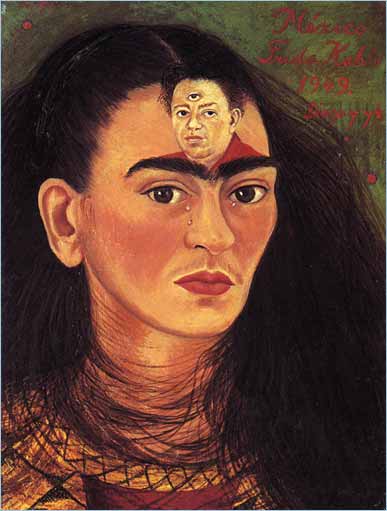<Back to Index>
- Anatomist Rudolph Albert von Kölliker, 1817
- Painter Magdalena Carmen Frida Kahlo y Calderón, 1907
- Rear Admiral John Paul Jones, 1747
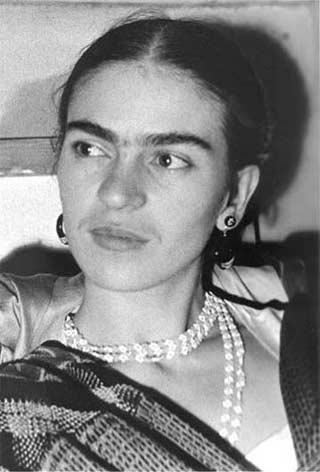
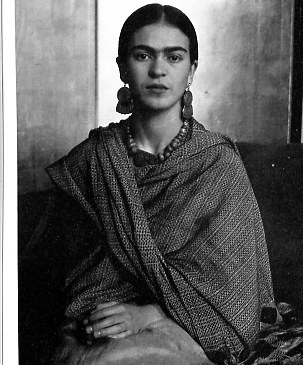
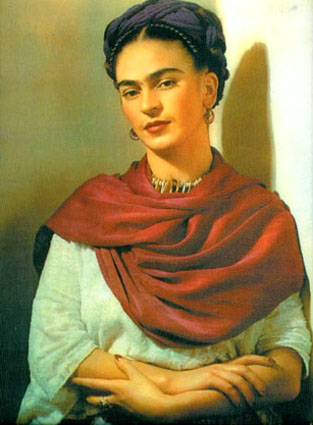
Frida Kahlo (born Magdalena Carmen Frida Kahlo y Calderón; July 6, 1907 – July 13, 1954) was a Mexican painter. She painted using vibrant colors in a style that was influenced by indigenous cultures of Mexico and European influences including Realism, Symbolism, and Surrealism. Many of her works are self-portraits that symbolically articulate her own pain. Kahlo was married to Mexican muralist Diego Rivera.
Frida Kahlo was born on July 6, 1907, in the house of her parents, known as La Casa Azul (The Blue House), in Coyoacán. At the time, this was a small town on the outskirts of Mexico City. Her father, Guillermo Kahlo (1871-1941), was born Carl Wilhelm Kahlo in Pforzheim, Germany, the son of Henriette Kaufmann and Jakob Heinrich Kahlo. While Frida herself maintained that her father was of Hungarian Jewish ancestry, researchers have established that Guillermo Kahlo's parents were not Jewish but Lutheran Germans. Guillermo Kahlo sailed to Mexico in 1891 at the age of nineteen and, upon his arrival, changed his German forename, Wilhelm, to its Spanish equivalent, 'Guillermo'. Frida's mother, Matilde Calderón y Gonzalez, was a devout Catholic of primarily indigenous, as well as Spanish descent. Frida's parents were married shortly after the death of Guillermo's first wife during the birth of her second child. Although their marriage was quite unhappy, Guillermo and Matilde had four daughters, with Frida being the third. She had two older half sisters. Frida remarked that she grew up in a world surrounded by females. Throughout most of her life, however, Frida remained close to her father. Her family remains a presence in the artistic world to this date; the actress, writer and singer Dulce María is her great grand-niece.
The Mexican Revolution began in 1910 when Kahlo was three. Later Kahlo claimed that she was born in 1910 so people would directly associate her with the revolution. In her writings, she recalled that her mother would usher her and her sisters inside the house as gunfire echoed in the streets of her hometown. Occasionally, men would leap over the walls into their backyard and sometimes her mother would prepare a meal for the hungry revolutionaries.
Kahlo contracted polio at age six, which left her right leg thinner than the left, which Kahlo disguised by wearing long, colorful skirts. It has been conjectured that she also suffered from spina bifida, a congenital disease that could have affected both spinal and leg development. As a girl, she participated in boxing and other sports. In 1922, Kahlo was enrolled in the Preparatoria, one of Mexico's premier schools, where she was one of only thirty-five girls. Kahlo joined a clique at the school and fell in love with the leader, Alejandro Gomez Arias. During this period, Kahlo also witnessed violent armed struggles in the streets of Mexico City as the Mexican Revolution continued.
On
September 17, 1925, Kahlo was riding in a bus when the vehicle collided
with a trolley car. She suffered serious injuries in the accident, including a broken spinal column, a broken collarbone, broken ribs, a broken pelvis,
eleven fractures in her right leg, a crushed and dislocated right foot,
and a dislocated shoulder. An iron handrail pierced her abdomen and her uterus, which seriously damaged her reproductive ability. Although she recovered from her injuries and eventually regained her ability to walk, she was plagued by relapses of
extreme pain for the remainder of her life. The pain was intense and
often left her confined to a hospital or bedridden for months at a
time. She underwent as many as thirty-five operations as a result of
the accident, mainly on her back, her right leg and her right foot. After
the accident, Kahlo turned her attention away from the study of
medicine to begin a full-time painting career. The accident left her in
a great deal of pain while she recovered in a full body cast; she
painted to occupy her time during her temporary state of
immobilization. Her self-portraits became a dominant part of her life
when she was immobile for three months after her accident. Kahlo once
said, "I paint myself because I am often alone and I am the subject I
know best." Her mother had a special easel made for her so she could
paint in bed, and her father lent her his box of oil paints and some
brushes. Drawing on personal experiences, including her marriage, her miscarriages,
and her numerous operations, Kahlo's works often are characterized by
their stark portrayals of pain. Of her 143 paintings, 55 are
self-portraits which often incorporate symbolic portrayals of physical
and psychological wounds. She insisted, "I never painted dreams. I
painted my own reality." Kahlo
was influenced by indigenous Mexican culture, which is apparent in her
use of bright colors and dramatic symbolism. She frequently included
the symbolic monkey. In Mexican mythology, monkeys are symbols of lust, but Kahlo portrayed them as tender and protective symbols. Christian and Jewish themes are often depicted in her work. She
combined elements of the classic religious Mexican tradition with
surrealist renderings. Kahlo created a few drawings of "portraits," but
unlike her paintings, they were more abstract. She did one of her
husband, Diego Rivera, and of herself. At the invitation of André Breton, she went to France in 1939 and was featured at an exhibition of her paintings in Paris. The Louvre bought one of her paintings, The Frame,
which was displayed at the exhibit. This was the first work by a 20th
century Mexican artist ever purchased by the internationally renowned museum. As a young artist, Kahlo approached the Mexican painter, Diego Rivera,
whose work she admired, asking him for advice about pursuing art as a
career. He recognized her talent and her unique expression as truly
special and uniquely Mexican. He
encouraged her artistic development and began an intimate relationship
with Frida. They were married in 1929, despite the disapproval of
Frida's mother. Their marriage was often tumultuous. Kahlo and Rivera had fiery temperaments and had numerous extramarital affairs. The openly bisexual Kahlo had affairs with both men and women, including Josephine Baker; Rivera
knew of and tolerated her relationships with women, but her
relationships with men made him jealous. For her part, Kahlo was
furious when she learned that Rivera had an affair with her younger
sister, Cristina. The couple eventually divorced, but remarried in
1940. Their second marriage was as turbulent as the first. Their living
quarters often were separate, although sometimes adjacent. Active communist sympathizers, Kahlo and Rivera befriended Leon Trotsky as he sought political sanctuary from Joseph Stalin's regime in the Soviet Union.
Initially, Trotsky lived with Rivera and then at Kahlo's home (where he
had an affair with Kahlo). Trotsky and his wife then moved to another
house in Coyoacán where, later, he was assassinated. A
few days before Frida Kahlo died on July 13, 1954, she wrote in her
diary: "I hope the exit is joyful — and I hope never to return — Frida". The official cause of death was given as a pulmonary embolism, although some suspected that she died from an overdose that may or may not have been accidental. An autopsy was
never performed. She had been very ill throughout the previous year and
her right leg had been amputated at the knee, owing to gangrene. She had a bout of bronchopneumonia near that time, which had left her quite frail. Later,
in his autobiography, Diego Rivera wrote that the day Kahlo died was
the most tragic day of his life, adding that, too late, he had realized
that the most wonderful part of his life had been his love for her. A pre-Columbian urn holding her ashes is on display in her former home, La Casa Azul (The Blue House), in Coyoacán,
which since 1958 has been maintained as a museum housing a number of
her works of art and numerous relics from her personal life.
